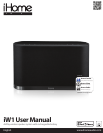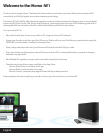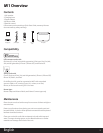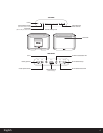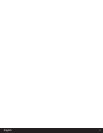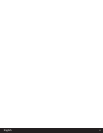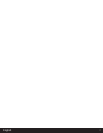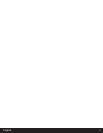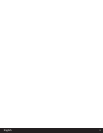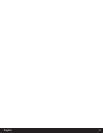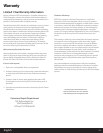
FCC ID:EMOIDM12 IC:986B-IDM12
This equipment complies with FCC RF radiation exposure limits set
forth for an uncontrolled environment. This transmitter must not be
co-located or operating in conjunction with any other antenna or
transmitter.
This Device complies with RSS-210 of the IC Rules; Operation is
subject to the following two conditions:
1. This device may not cause interference and
2. This device must accept any interference received, including
interference that may cause undesired operation
This equipment complies with the limits for a Class B digital device
as specified in Part 15 of FCC Rules. These limits provide reasonable
protection against radio and TV interference in a residential area.
However, your equipment might cause TV or radio interference
even when it is operating properly. To eliminate interference you
can try one or more of the following corrective measures:
• Reorient or relocate the receiving antenna.
• Increase the distance between the equipment and the radio or
TV.
• Use outlets on different electrical circuits for the equipment and
the radio or TV.
• Consult your dealer or an experienced radio/television techni-
cian if the problem still exists.
Modifying or tampering with your system’s internal components
can cause a malfunction and might invalidate the system’s warranty
and void your FCC authorization to operate it.
This Class B digital apparatus complies with Canadian ICES-003.
Cet appareil numérique de la classe B est conforme à la norme
NMB-003 du Canada.
11
English
Consumer Product Safety Guide
Safety Instructions
Water and Moisture – The unit should not be used near water.
For example: near a bathtub, washbowl, kitchen sink, laundry
tub, swimming pool or in a wet basement.
Ventilation – The unit should be situated so that its location or
position does not interfere with its proper ventilation. For
example, it should not be situated on a bed, sofa, rug or similar
surface that may block ventilation openings. Also, it should not
be placed in a built-in installation, such as a bookcase or
cabinet, which may impede the flow of air through the
ventilation openings.
Heat – The unit should be situated away from heat sources
such as radiators, heat registers, stoves or other appliances
(including amplifiers) that produce heat.
Power Sources – The unit should be connected to a power
supply only of the type described in the operating instructions
or as marked on the appliance.
Power Cable Protection – Power supply cables should be
routed so that they are not likely to be walked on or pinched by
items placed upon or against them. It is always best to have a
clear area from where the cable exits the unit to where it is
plugged into an AC socket.
Cleaning – The unit should be cleaned only as recommended.
See the Maintenance section of this manual for cleaning
instructions.
Objects and Liquid Entry – Care should be taken so that objects
do not fall and liquids are not spilled into any openings or vents
located on the product.
Attachments – Do not use attachments not recommended by
the product manufacturer.
Lightning and Power Surge Protection – Unplug the unit from
the wall socket and disconnect the antenna or cable system
during a lightning storm or when it is left unattended and
unused for long periods of time. This will prevent damage to
the product due to lightning and power-line surges.
Overloading – Do not overload wall sockets, extension cords,
or integral convenience receptacles as this can result in a risk of
fire or electric shock.
Damage Requiring Service – The unit should be serviced by
qualified service personnel when:
Antenna – Do not connect an external antenna to the unit
(other than that provided).
Periods of None Use – If the unit is to be left unused for an
extended period of time, such as a month or longer, the power
cable should be unplugged from the unit to prevent damage
or corrosion.
Servicing – The user should not attempt to service the unit
beyond those methods described in the user’s operating
instructions. Service methods not covered in the operating
instructions should be referred to qualified service personnel.
1.
2.
3.
4.
5.
6.
7.
8.
9.
10.
11.
12.
13.
14.
FCC Radiation Exposure Statement
A. the power supply cable or plug has been damaged.
B. objects have fallen into or liquid has been spilled into the enclosure.
C. the unit has been exposed to rain.
D. the unit has been dropped or the enclosure damaged.
E. the unit exhibits a marked change in performance or does not operate
normally.



